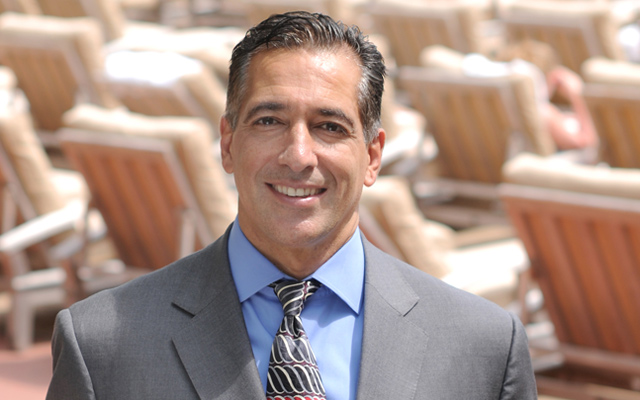There’s a new ritual at bedtime in our house these days. We eat dinner, play with some toys, clean up our mess, brush our teeth, and then attempt to put on our toddler’s pajamas.
I say “attempt” because she fights it hard, full tears, sometimes flailing on the ground in complete distress. I feel slightly bad that she’s so upset, but I also have to do my best not to laugh aloud at the ridiculous behavior. I mean, good heaven’s child, it’s just pajamas.
Of course, I don’t laugh (I turn away or leave the room and let Dad take over if need be), and mostly I’ve stayed sane from remembering that there a lot of things that don’t make sense to a newly developing brain: Why on earth would I need to change clothes at night? My day clothes are comfortable, and I practically lived in onesies as an infant — so why, now, the wardrobe switch?
Why do I need to eat dinner at 6 p.m. if I’m not hungry? Why does Mom make me eat all my veggies and meat before I can have more crackers? Can’t I just eat an entire plate of fruit?
Another bath?!? Didn’t we just do that a few days ago?
Being a fact-based, practical person, I try to explain how we approach life and why we do what we do. Sometimes, though, her emotional outbursts help me question those usual to-dos: Do I really need to do this? What’s the purpose?
These moments have also encouraged me to, 1) expand my understanding of the human brain, and 2) remember that we all speak different languages, literally and figuratively, hence the communication breakdown that happens all too often, even with adults.
To understand the toddler brain, I returned to a book by pediatrician Harvey Karp, MD, whose groundbreaking The Happiest Baby on the Block outlines the “five S’s” that saved our family many sleepless nights. His follow-up, The Happiest Toddler on the Block: How to Eliminate Tantrums and Raise a Patient, Respectful, and Cooperative One- to Four-Year Old, had me sold on the title alone.
Reading this book and learning to negotiate with my toddler has also reminded me of important lessons that adults should keep in mind when speaking with one another. A few takeaways:
- Karp begins this oh-so-helpful book by explaining how toddlers’ brains work: “Toddlers aren’t mini-adults, or even mini–big kids. They are more like uncivilized little cave-kids.” Thinking of my darling infant turned cave-kid did give me pause — after all, most of the time, she’s quite pleasant, happy, and sweet — but when the unruly mind goes full tantrum, “cave-kid” is the perfect description.
Subtext for adults:
Most adults don’t really pay attention to brain development until they start to notice challenges with memory. There’s the thinking that after a certain age, the human brain is fully developed and, depending on our educational and cultural influences, we should all be on the same page. Yet, we know the human brain continues to transform and grow and adapt through a process called neuroplasticity. We can (and should) always continue learning, for our health and for a better appreciation of one another. (Who’s more interesting at a party than the traveler or the book or movie reviewer? See “Upgrade Your Brain” for more.)
- Another important part of Karp’s method is teaching parents how to define their child’s temperament, so they know how to approach challenging situations, because as he acknowledges, every child is different. Karp’s appreciation for a toddler’s uniqueness goes right to the soft spot in this mom’s heart.
Subtext for adults:
Expecting each adult to communicate effectively simply because we’re adults is short-sighted. We are all different ages with different educational levels, backgrounds, family histories, cultural influences, traumatic experiences, language skills, religions, and more. When a boss, new acquaintance, friend, family member, or politician behaves or speaks in a manner that doesn’t make sense to you as appropriate behavior, consider who they are and where they came from. What’s his or her motive and end game? What about personal history and experience? The big-picture review sometimes helps, and sometimes doesn’t, but at least you’ve calmed your own nerves and remembered that even as one human species, we all present as quite different creatures.
- Although it felt totally odd at first, I’ve come to embrace Karp’s “Toddler-ese,” a simple and straightforward way of speaking to your child that reflects their frustration so you can break through the fury to connect better. I’ll say, “I mad! I mad! Sylvia says, ‘I want cracker now!’” and as soon as she stops crying to listen to her own language, I can say, “I know, honey, but we can have crackers after we eat our yummy veggies.” Somehow, it works, even if I sound a bit strange.
Subtext for adults:
We can value the remarkable fact that we speak so many different languages on this planet, yet have similar desires and hopes for ourselves and our families. Even when we do speak the same language, we can fumble on communication. Taking a step back to admit misunderstanding and seek clarification with compassion goes a long way toward resolution. Learning how to better relate (part of your adult education course, as noted above) can improve personal relationships (see “The 5 Love Languages” and “The Art of the Conversation”), boost success in your career (see “Office Talk”), and gain healing connections (see “Talk Rx” and “Real-Life Connections”).
Don’t just take my word for it: We can all be a little better off if we learn the ways of the toddler.
Photography by Courtney Lewis Opdahl




This Post Has 0 Comments